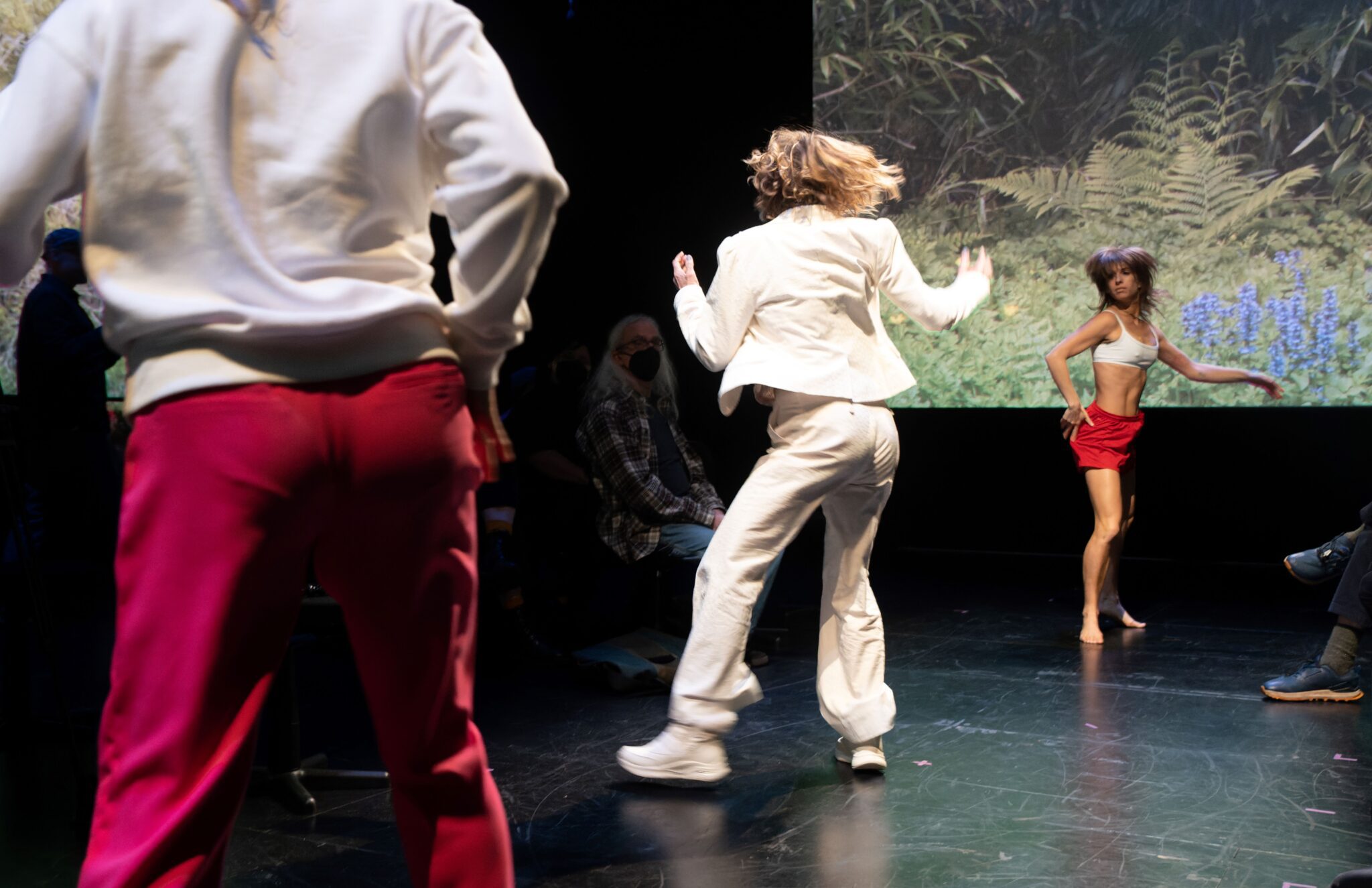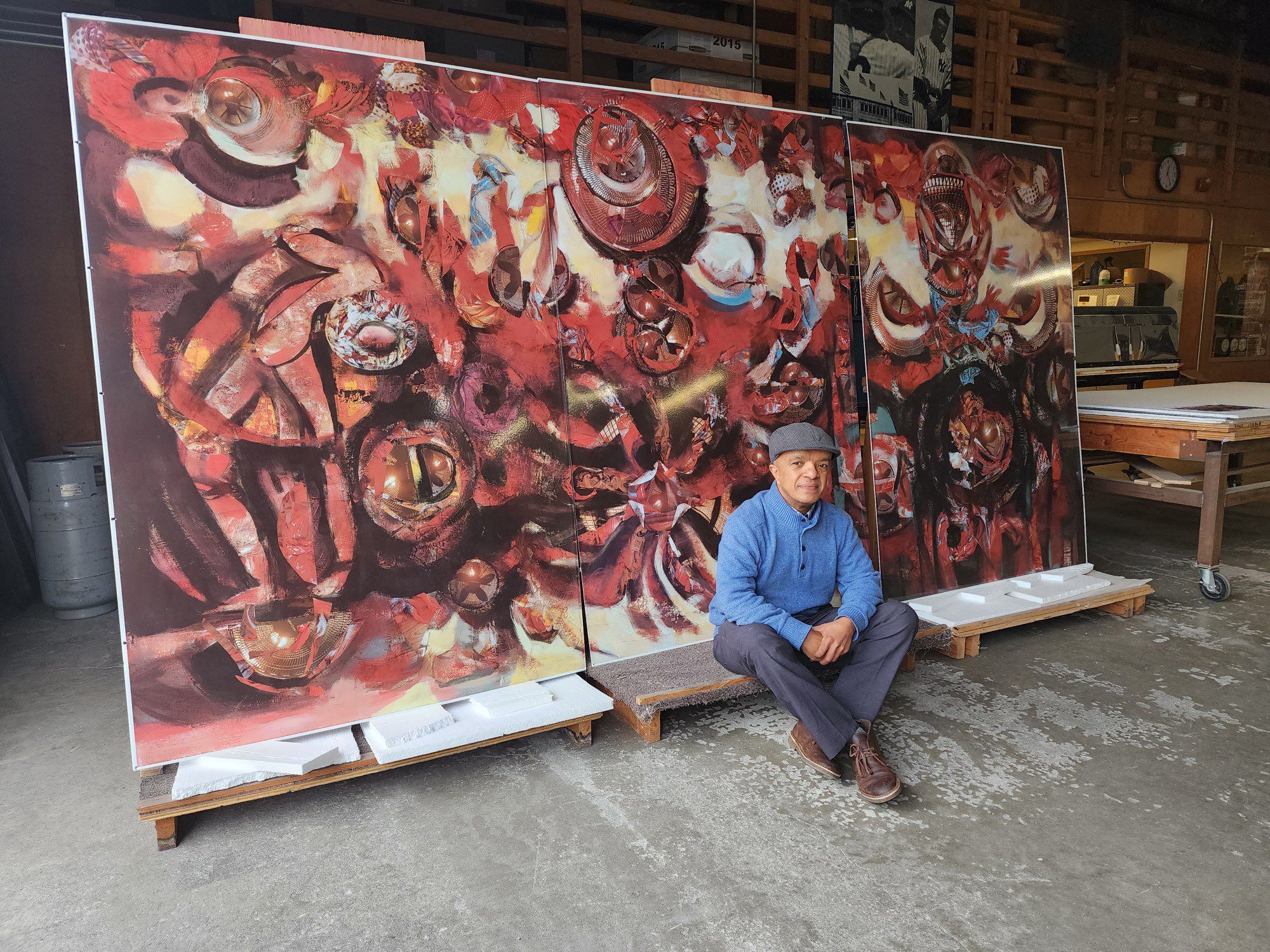
Pictured: Ward Serrill
Ward Serrill is a documentary filmmaker from Seattle, who is known for films such as The Heart of the Game (Miramax), and Something in the Water (PBS). His most recent film, Catching Fire follows Vashon’s Island’s Peter Scott on his quest to save the forests and women of Africa through the invention of a simple cook stove. He received a 2014 CityArtist grant for this project, and we got to chat with him about his influences, going to Africa, what he loves about making films, and much more. Watch the trailer and read more about Ward Serrill below!
Annie Holden: First off, I wanted to say – talking about these stoves is an important story to share, so thank you for telling it and allowing me to learn about it!
Ward Serrill: Thank you. Who would have thought that a simple invention of a stove might save the forests of Africa? And that it is a story that originated right here in our front yard, on Vashon Island. Telling this story can have a big impact. Over 3 billion people–half of the world–cook every day on open fires or inefficient stoves. Cooking on these fires and inefficient stoves is deforesting major parts of the world and is killing 4 million people a year, from the indoor smoke—mostly women and children. That’s more people than die from Malaria and AIDS combined.
AH: So why do you think this issue isn’t so well known?
WS: I think there are three reasons. First, it’s hard to see the immediate effect of the deforestation. It is not a few huge logging companies cutting huge swaths of forests, it is billions of people hacking away slowly at the fringes of the forests and millions of small producers making charcoal. Second, the health effects of smoke inhalation take years to develop, and the childhood pneumonia and other respiratory diseases that eventually kills people, is not seen even by the victims as coming from the smoke in their own homes. And third, unfortunately, I think is basic sexism. If it were four million men dying every year, and those men were Americans, rather than women and children in developing countries, it would be headline news.
Ever since “The Heart of the Game” I’ve always seemed to do films that revolve around women’s empowerment and women’s issues-I don’t seek them out, they just come along. CNN has just hired me to do a film on the women’s prison here in Gig Harbor for instance.
AH: What were some of the reactions of women in Kenya receiving or using the stoves?
WS: It was very dramatic. Women in Africa have to spend a great part of their family income on cooking fuel, firewood and charcoal. Peter Scott’s stoves save them nearly 50%. When women save money; it usually goes into their family’s health or education. Also Peter’s stove does not emit any smoke, so that amazed them.
AH: How did you meet and come to work with Peter Scott, the man who invented the “Burn” oven and the subject of Catching Fire?
Pictured: Peter Scott
WS: My wife and producer, Sophie, and I were friends of Peter and his wife Olivia before the film; we knew each other from living on Vashon Island. We were working on “Tree Story,” a documentary that explored relationships people have to trees around the world, and Jannat Gargi, a local producer suggested that we focus an entire film on him because the story was so dramatic.
AH: How has your friendship with Peter impacted the film?
WS: The director Albert Maysles said recently in an interview that he approaches all of his films as acts of friendship, and after I read that, I realized that’s how I approach my films. I always try to make friends with the people whose story I’m telling, because they have to literally trust you with the telling of their life. So, being friends with Peter before that process began made it even easier. It’s all about gaining trust. It’s weird as well. You are friends, but you also have to stay a bit detached in order to film and to make the movie.
Peter as well had to build trust with the women who would eventually use his stoves. One of the things that makes him unique is that he went to Africa and spent years working with the women to determine the kind of stove they needed and how to create one that hold up the hard use they were put through. He’s been working relentlessly on this project for 20 years. He’s absolutely committed to saving the world in his way.
AH: Although the film takes place in Africa, you mentioned that there were local ties to this project – what are they (other than just from being here)?
WS: Yes, Peter Scott developed his stove at a design lab he created on Vashon Island called Burn Design Lab. That’s where he set out to create his “stove army”. His idea attracted interns from around the world as well as CEO’s of Fortune 500 companies who left their jobs to work with him. As well Vashon Island is a reservoir of latent talent, full of retired brilliant engineers, inventors and executives who have all been drawn to Peter and his passion for this work.
And we followed him to Africa for a month to film. Peter has built the first factory of its kind in Nairobi Kenya and has hired women to work in the factory in Kenya—50% of the factory employees– which is unheard of over there.
AH: What have been your favorite moments working on this project?
WS: The favorite part of any film to me is the filming itself and the editing. But on this project being invited into the women’s homes in the slums of Nairobi and filming them using their stoves. I don’t know how big the room you’re sitting in now is, but I’m sitting in a 10x12ft room, and in this amount of space they have everything – kitchen, four, five beds, living room, and for them to trust us to go into their house, meet their families and let us film with them was so beautiful and so humbling.
AH: What got you into documentary filmmaking?
WS: I’m fascinated by life. I watch a lot of things – when I lived in Alaska, I used to watch nature, waterfalls, wind through trees, waves, everything really. This fascination with nature expanded to a fascination of people, where I’d love to watch people, I’m drawn to remarkable characters doing powerful work. Everyone is on a hero’s journey; every film you see has components of this journey. People’s lives are characters living out their stories, and I want to capture that active heroism. I’m stunned by real life stories.
I’m completely in awe of people like say, Lynn Shelton and others who are able to make up characters and stories in their heads and make them into films. I’m not wired that way. I just follow real life, follow a few wild animals, and hope those stories occasionally shine some kind of illumination to inspire other people. It’s a crazy way to live, because you can work on a story for years and not have it pan out. But when it does, as with The Heart of the Game, you can end of being part of a magic show.
AH: What are your favorite documentary films?
WS: If I listed them all, we’d be talking for another hour! I’ll just start with ones I’ve seen in the last two months. You have to see the documentary short that just won the Academy Award – The Lady in Number 6: Music Saved My Life. I also loved 20 Feet from Stardom (which just won the Academy Wward for Documentary Feature), Stories We Tell (which was my favorite documentary from last year), Blackfish and The Square. But before that, anything Errol Morris has done. Anything Alex Gibney has done, Joe Berlinger, Steve James of Hoop Dreams fame, on and on. I love Michael Moore and Morgan Spurlock because they brought entertainment to the world of documentary making: getting people to laugh and then unveiling difficult subjects for them to take notice.
AH: When will Catching Fire be screened?
WS: There will be 2 screenings, one in Seattle on Sunday, May 30th, and one on Vashon in April. Seattle’s primary audience will be the Kenyan community who live primarily in South Seattle, Renton and Tukwila, and will be shown in the basement of the Kenyan Interdenominational Church in Rainier Valley. The Vashon Island screening will be in mid April, and will draw the community who know Peter, who are friends and family of his stove army as well as people who know me and who’ve helped with the process in the last 4 years.
AH: What’s in the future for Catching Fire?
WS: KTCS via the Northwest Film Forum, gave a small grant to help us start it and has shown interest in developing the short into an hour long documentary so I’m very excited about this possibility. We also got a grant from 4Culture and of course from the City.
AH: Congrats on your grant, and thank you for talking with me!
WS: Thank you — this could not have happened without the Office of Arts & Culture!
All images and video courtesy Ward Serrill.
The CityArtist program supports the development and presentation of work by independent Seattle-based artists. The Office of Arts & Culture will post/share stories about the CityArtist’s works in-progress based on interviews and site visits by staff members Annie Holden and Irene Gómez. Learn more about the CityArtist grant here, and read more CityArtist stories here.





